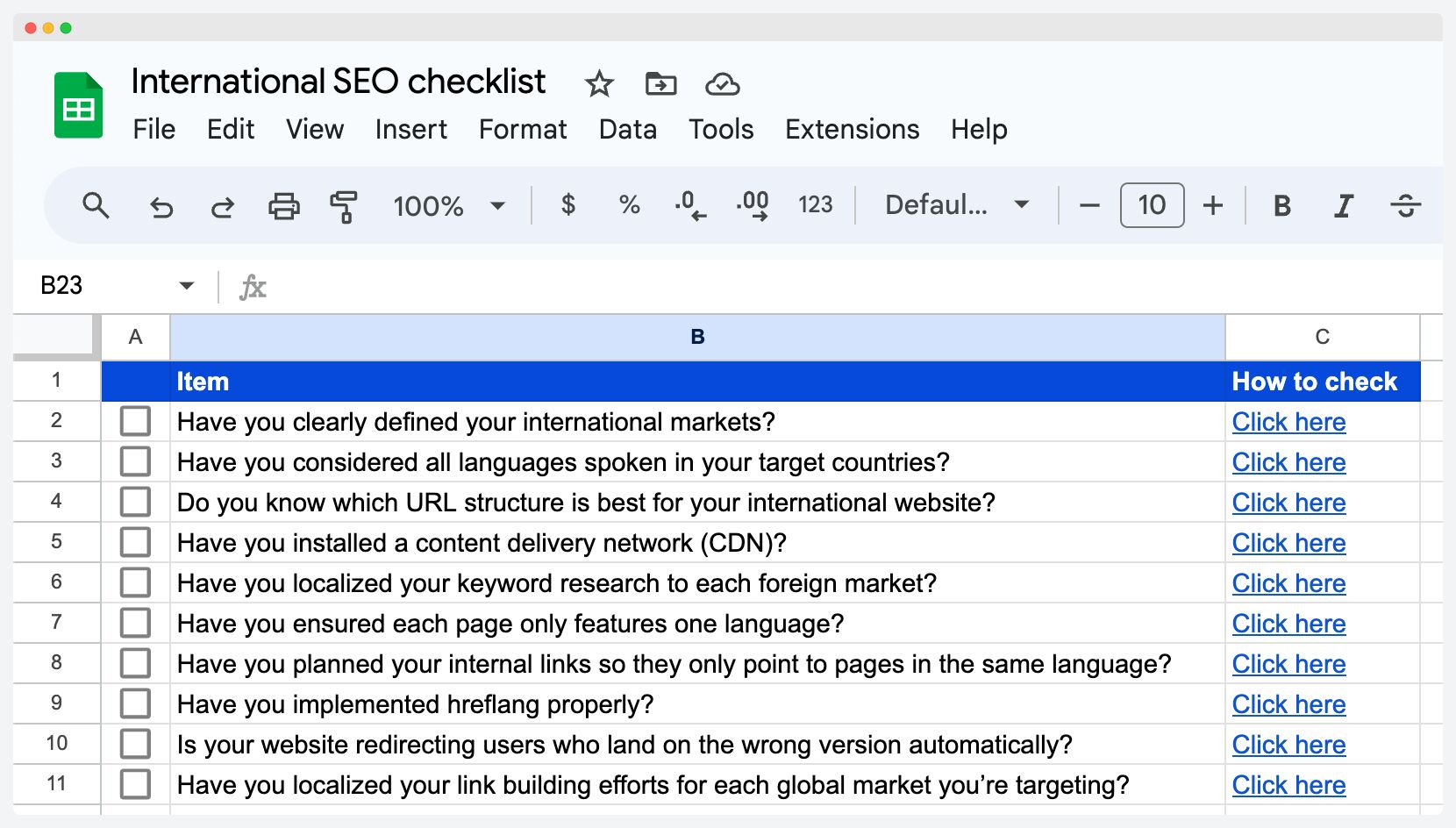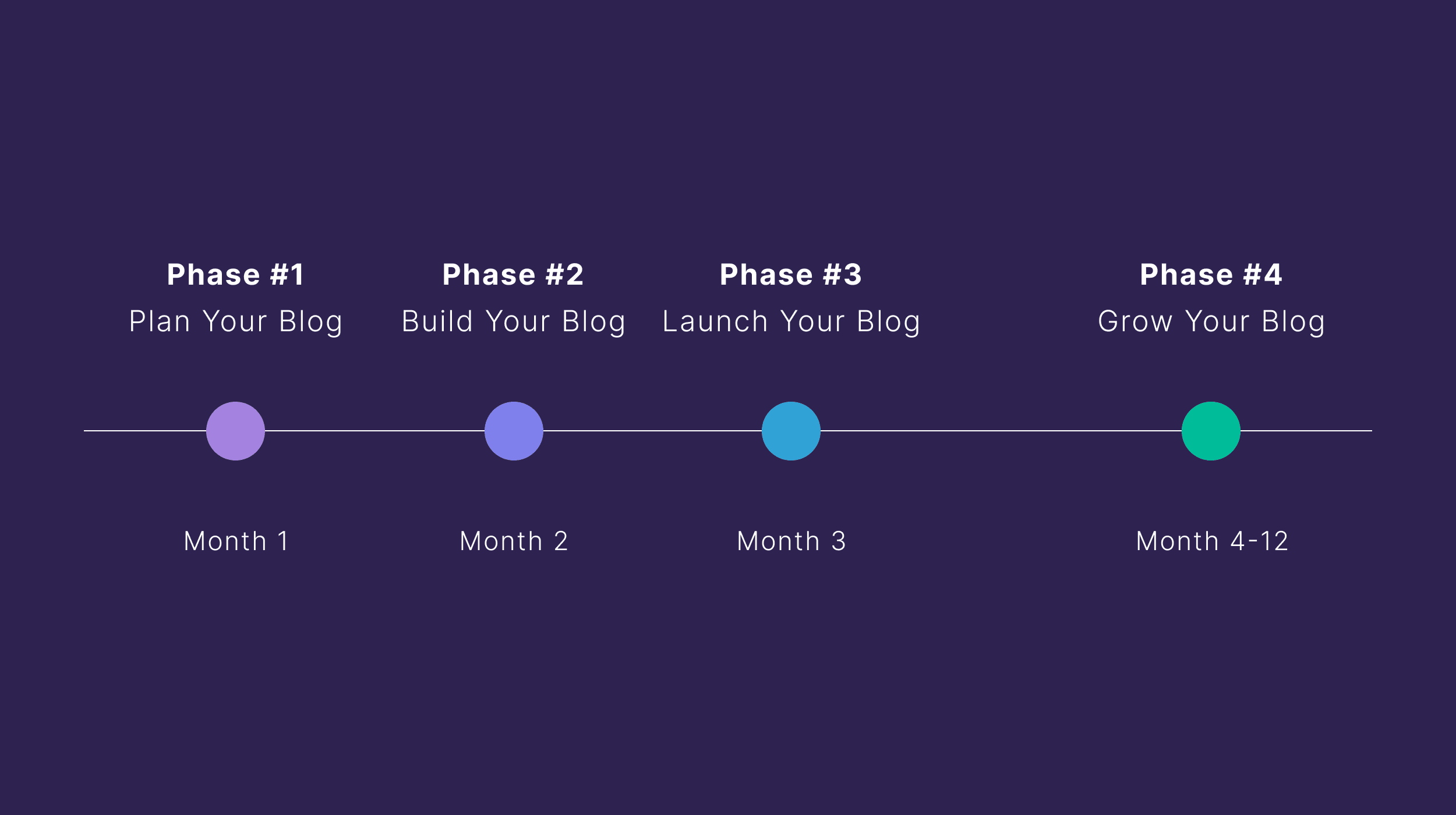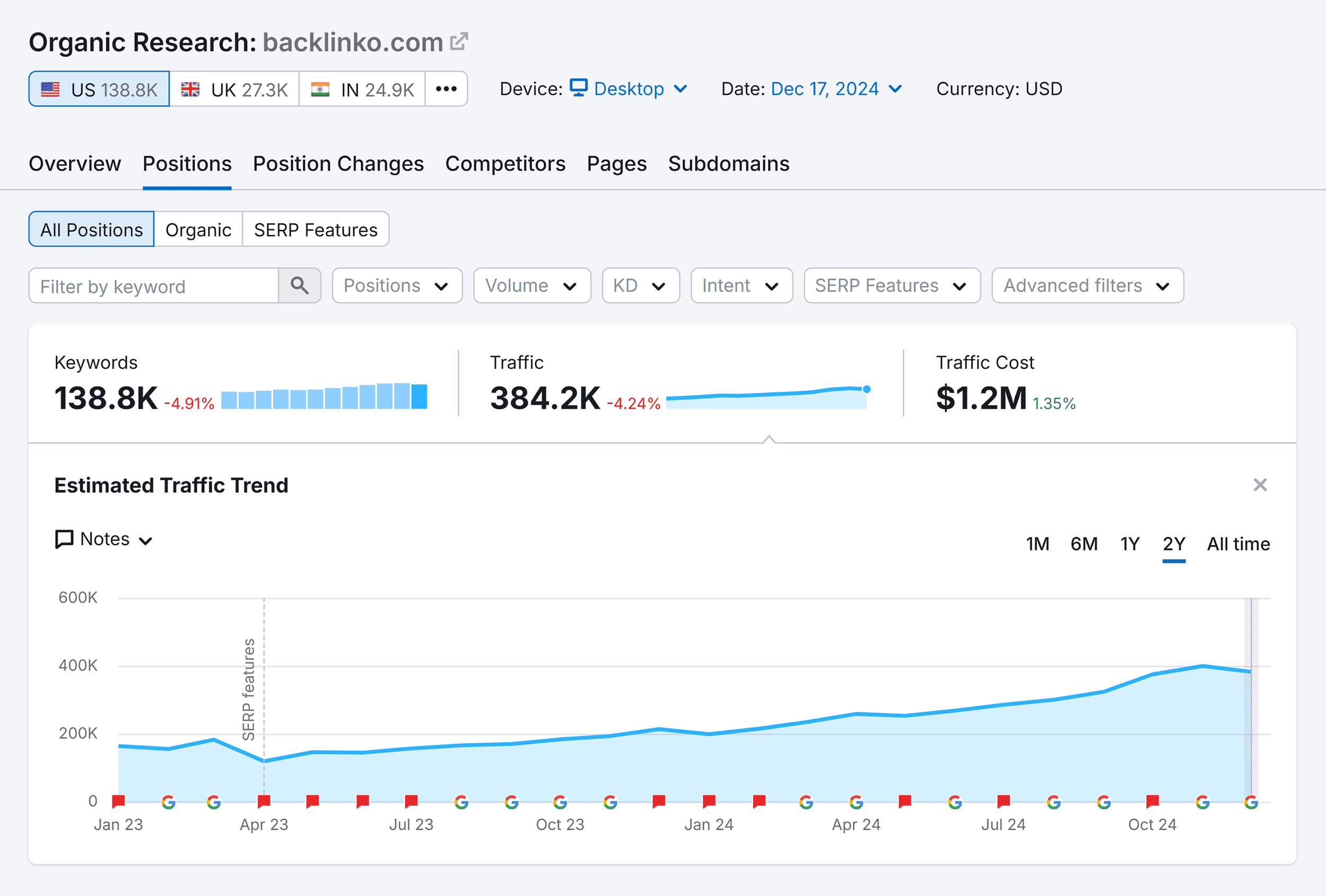International SEO is the process of optimizing your website for users in different countries and speakers of different languages. Its goal is to drive more traffic from an international audience.
Follow the international SEO best practices below to better target foreign markets.
Looking for an international SEO checklist?
We’ve got you covered. Download the checklist below to implement all of these best practices with ease.
International SEO best practices
- Define your international markets
- Consider all languages spoken in each global market
- Decide on your URL structure
- Install a content delivery network (CDN)
- Do keyword research for each of your foreign markets
- Use one language per page
- Ensure internal links only go to content in the same language
- Implement hreflang properly
- Don’t redirect users based on their IP address or cookies
- Build your backlink profile in each of your target countries
It’s likely you already have an idea of which global markets you’d like to target based on non-SEO factors, like your ability to operate in a specific country.
However, it’s also worth checking SEO metrics to understand which markets hold the strongest potential for your business. Your business may:
- Naturally decide to serve this market in future.
- Be missing out on a foreign market with huge search demand.
- Be missing out on a foreign market with low search competition.
You can get a rough idea of the markets with search potential by entering competitors into Ahrefs’ Site Explorer. Just check the graph that shows their estimated organic traffic share by country.
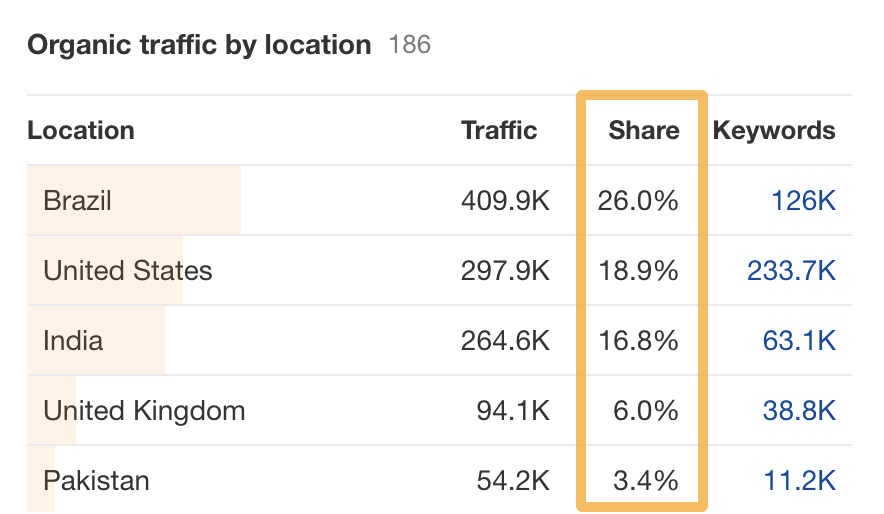
For example, the site above is one of our competitors and gets over a quarter of its traffic from Brazil. This shows us that this might be an international market worth targeting.
Sidenote.
You will, of course, need to dig deeper than this to validate the success of an international SEO strategy in each of these countries. But we’ll tackle that when we get to doing keyword and competitive research. For now, this should give you a good idea of potential countries to start thinking about targeting on your international website.
If your global SEO strategy will include countries where the users’ first language can be one of several, you may need to consider providing content in multiple languages per country.
For example, Wikipedia tells us that both French and English are official languages in Canada. To target this market, you’ll need to roll out a French-Canadian version as well as an English-Canadian version to target both English- and French-speaking users.

The same may be needed in countries with culturally diverse populations, even if there is only one official language in that country.
For example, for a website about visas or immigration services, you may need to consider creating international content in multiple languages to ensure accessibility for all residents.
Can I just create language-specific content no matter what country my audience lives in?
It’s perfectly within Google’s guidelines to only target users by language and not worry about country-specific SEO targeting. For some types of content, you may even get away with this approach. I recommend searching your top keywords to see how the best ranking results approach this.
Taking on a language-first approach may be the perfect starting point for your business, particularly if you are tight on resources. You’ll be working with fewer pages, which also results in less of a chance of things breaking.
That said, if you have a specific country in mind, rolling out country-specific SEO content is the most optimal approach. This allows you to focus your content around the users in each country that you intend to target.
For starters, you’ll want to serve your products or services in the right currency. Furthermore, you can tweak the terminology used, and adapt your content to match the local culture, as this varies from country to country (even when the language remains the same).
Planning your URL structure is vital for international sites and helps determine where content for each foreign SEO market will live on your website. There are three main options to consider, each with different pros and cons, and one to avoid at all costs.
ccTLDs for international SEO
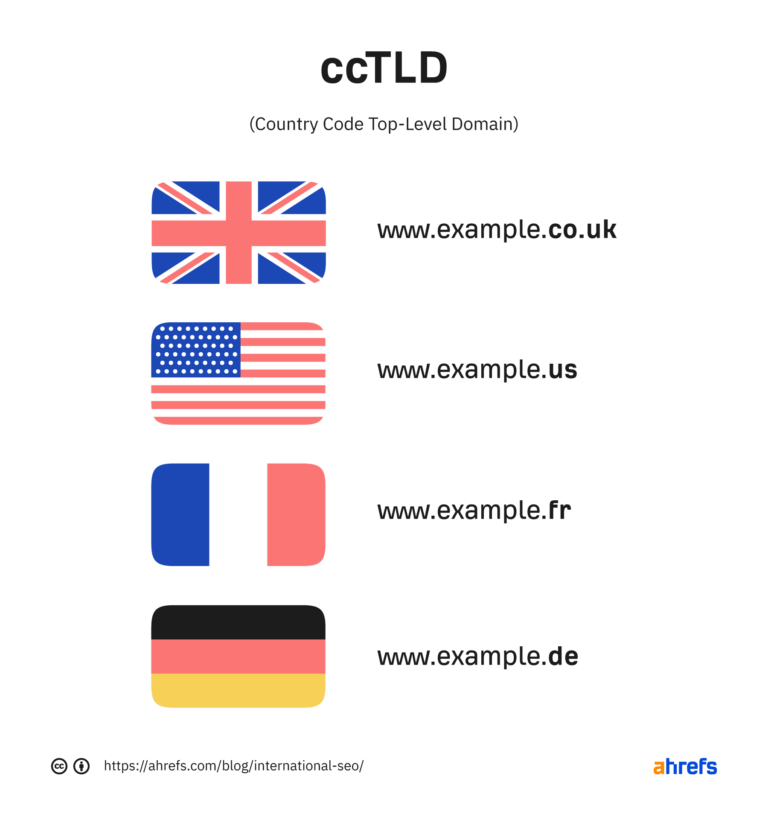
This option is very popular, most notably because users are familiar with the top-level domain of their country. This contributes to users having that feeling of being in the right place when they land on the page.
On the other hand, you’ll need to consider the cost of purchasing several domains. In the opinion of many SEOs, you’ll also be diluting your PageRank by splitting content across several domains. This is because you’ll need to build up SEO authority across multiple domains as opposed to a single, stronger domain.
Pros
- Target country is clear to users
- Ability to use localized hosting for enhanced page load times
Cons
- Usually more costly, as you’ll need to purchase several domains
- Maintaining several domains can be technically challenging
- Content or design changes will need to be copied across multiple websites
- URL doesn’t specify the language (e.g., .ca could be for English or French speakers)
Subfolders for international SEO
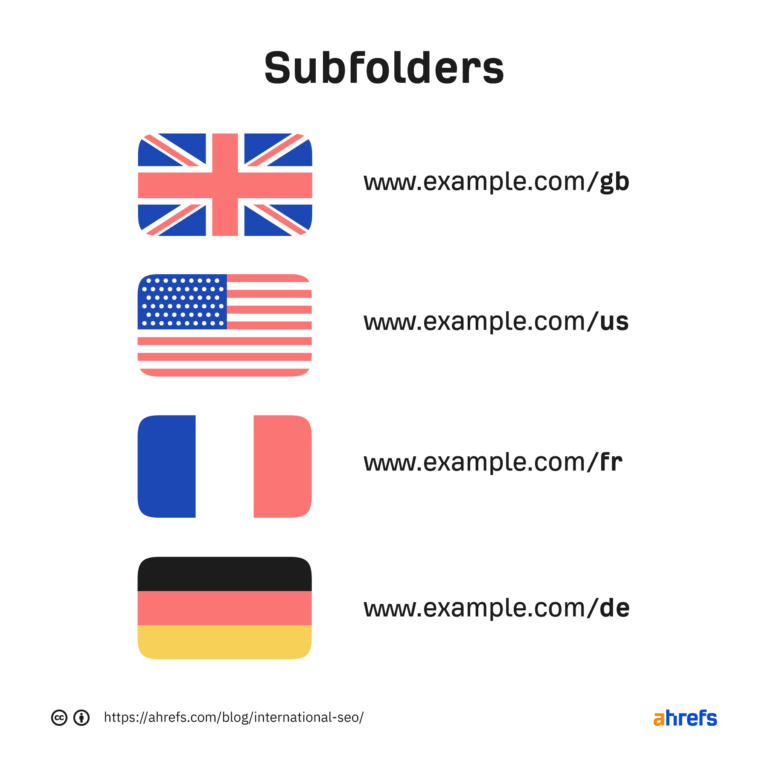
Subfolders are not only very popular among SEOs but also webmasters. This is because all of the content sits within a single domain. That means you’ll only need to maintain one international website and it can display localized content to each of your global SEO markets.
It’s also much easier to create a new version of a page by simply changing the URL path (or slug) compared to rolling out a new page on a completely different hosting setup. Reporting is easier too, as you’ll only need to install your analytics tag on a single domain.
Pros
- Relatively straightforward to set up
- Customizable naming (e.g., example.com/germany)
- Easier to track and report
Cons
- Users may not be as familiar with this URL structure
Subdomains for international SEO
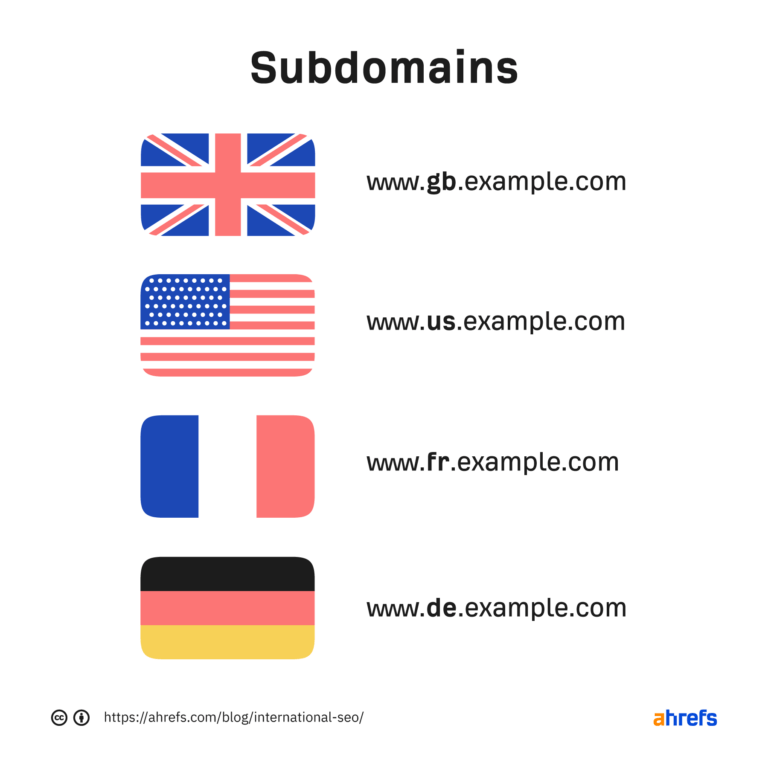
Subdomains are less popular but do have some unique benefits. The ability to use customizable naming conventions is a notable one. This is not achievable with ccTLDs.
The cons, however, are closely aligned with those of the ccTLD. Despite subdomains effectively being an extension of your main domain, Google will have to crawl these separately at first.
Pros
- Ability to use localized hosting
- Customizable naming (e.g., france.example.com)
Cons
- Maintaining several domains can be technically challenging
- Users may not be as familiar with this URL structure
- Content and design changes will need to be copied across multiple websites
Parameterized URLs (avoid!)
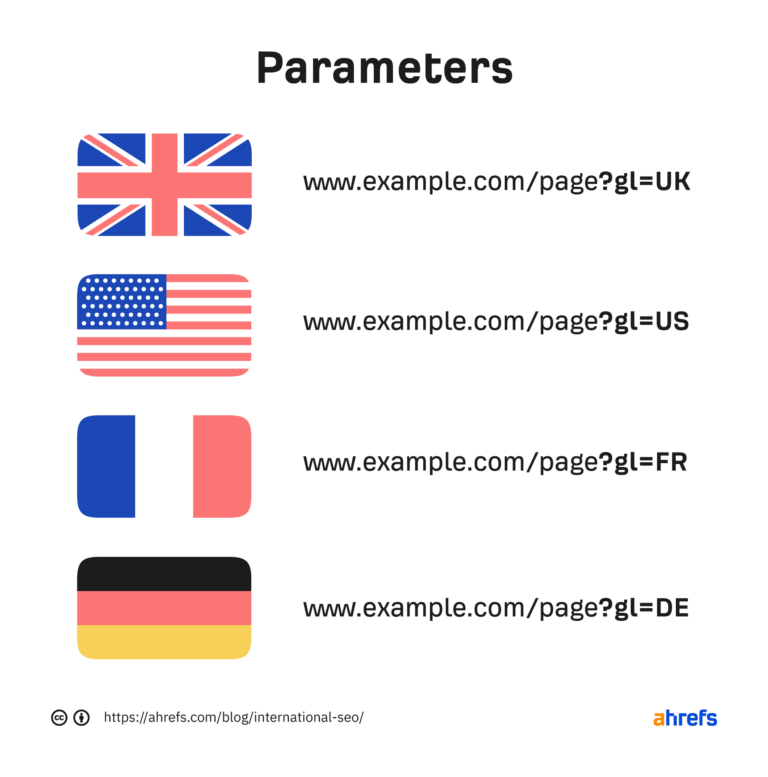
This option should be avoided at all costs. Parameterized URLs are not user-friendly and can confuse bots too.
This option is not recommended by Google for internationalization.
For these reasons, let’s take the parameterized URL option completely out of the equation.
Jamie’s verdict
In my opinion, the cons of the subdomain option far outweigh the advantages. So for me, it is a straight shoot-out between ccTLDs and subfolders.
When starting from scratch, I personally prefer the subfolder option. For me, the benefits of hosting all content under the same domain should not be overlooked.
That said, it’s OK to prefer a different route, as many SEOs do. You won’t be penalized, as all three options are supported by Google.
If users have a slow experience when loading your site from abroad, it can impact your international SEO rankings. If you opted for a ccTLD or subfolder URL structure and have paired each site with localized hosting, it’s more likely your content will load fast in each of your foreign markets.
However, if you are serving users in multiple countries from one international website, there’s never been a more crucial time to implement a Content Delivery Network (CDN).
CDNs use a group of distributed servers, ensuring visitors load your international content from a localized server as opposed to a single, centralized server. This helps to keep page load times down, resulting in a more satisfying user experience worldwide.
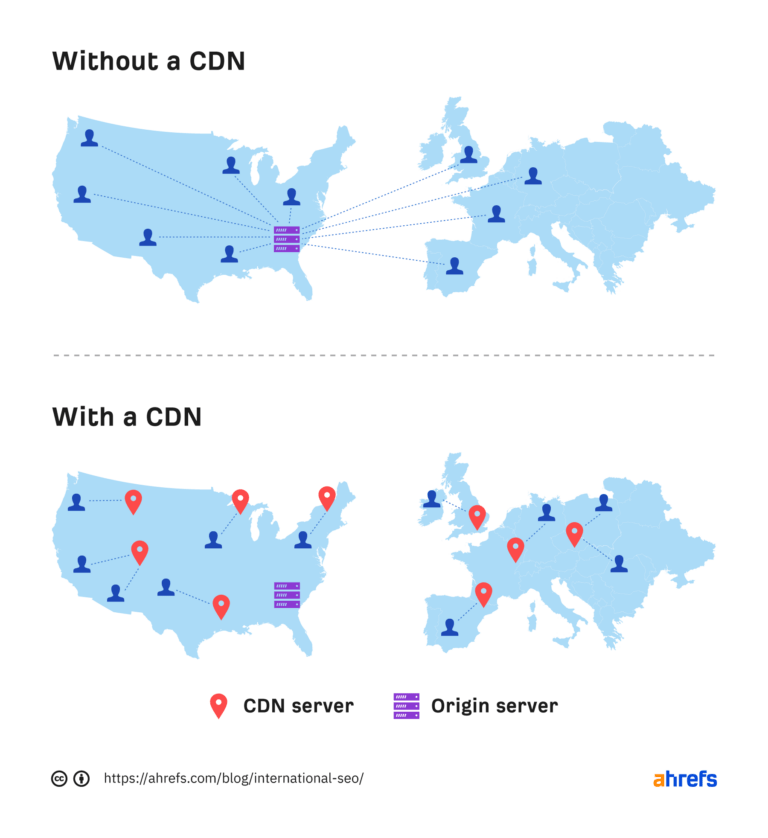
Now that you have your technical foundations in place, the next step is to carry out international keyword research and to localize your worldwide SEO strategy for each of your chosen markets. This is recommended, even if you decide to only roll out your international strategy in a single language.
Earlier on, I mentioned that terminology varies from country to country, even if the language remains the same. This, in turn, will have an impact on the keywords your potential customers are searching for.
For example, in the US, it is more common to use the terminology “ibis bird” instead of the colloquial phrase “bin chicken”:
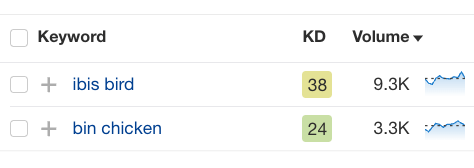
In Australia, there are very few searches for “ibis bird” compared to the 12,000 for “bin chicken” each month:

Search volume will also differ from country to country, as population and search demand vary. This is something we’ll need to take into consideration in our foreign SEO strategy when making projections based on keyword data.
For example, using Ahrefs’ Keywords Explorer, we can see that the UK holds the highest search volume for the term “home insurance” with 67K monthly searches.
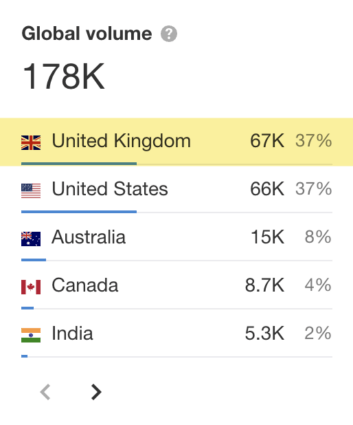
Based on this data, we can expect that the UK and US markets will bring the most search traffic for this keyword. Whereas visitors from other countries may use other keywords more frequently.
Sometimes your foreign SEO strategy may require keyword research in different languages (that you don’t speak).
We’ve added many tips in our international SEO checklist for how you can still target keywords in these languages, make sure to check those out!
The outcome of establishing your international site’s URL structure and completing multi-region keyword research will be a localized content plan for each foreign SEO market.
It’s important that you only use one language on each page. This means for each piece of content you create, it is ideal that you create a separate web page for every additional language you’d like that content to target.
Anything that can be localized should be localized. In addition to on-page copy and metadata, this can also include:
- Images
- Currencies
- Time zones
- Phone numbers (where possible)
- Office address (where possible)
Dynamically translating copy that sits on the same URL is a no-go. Google recommends using dedicated URLs, as this allows its crawlers to efficiently discover, read, and index all versions of your content.
Having country-specific versions of the page is also recommended if you’re going for a hyper-focused approach and segmenting your international website by country, not just language.
For example, if you’re targeting Canada, you will need to create a French-Canadian version as well as an English-Canadian version of each page.
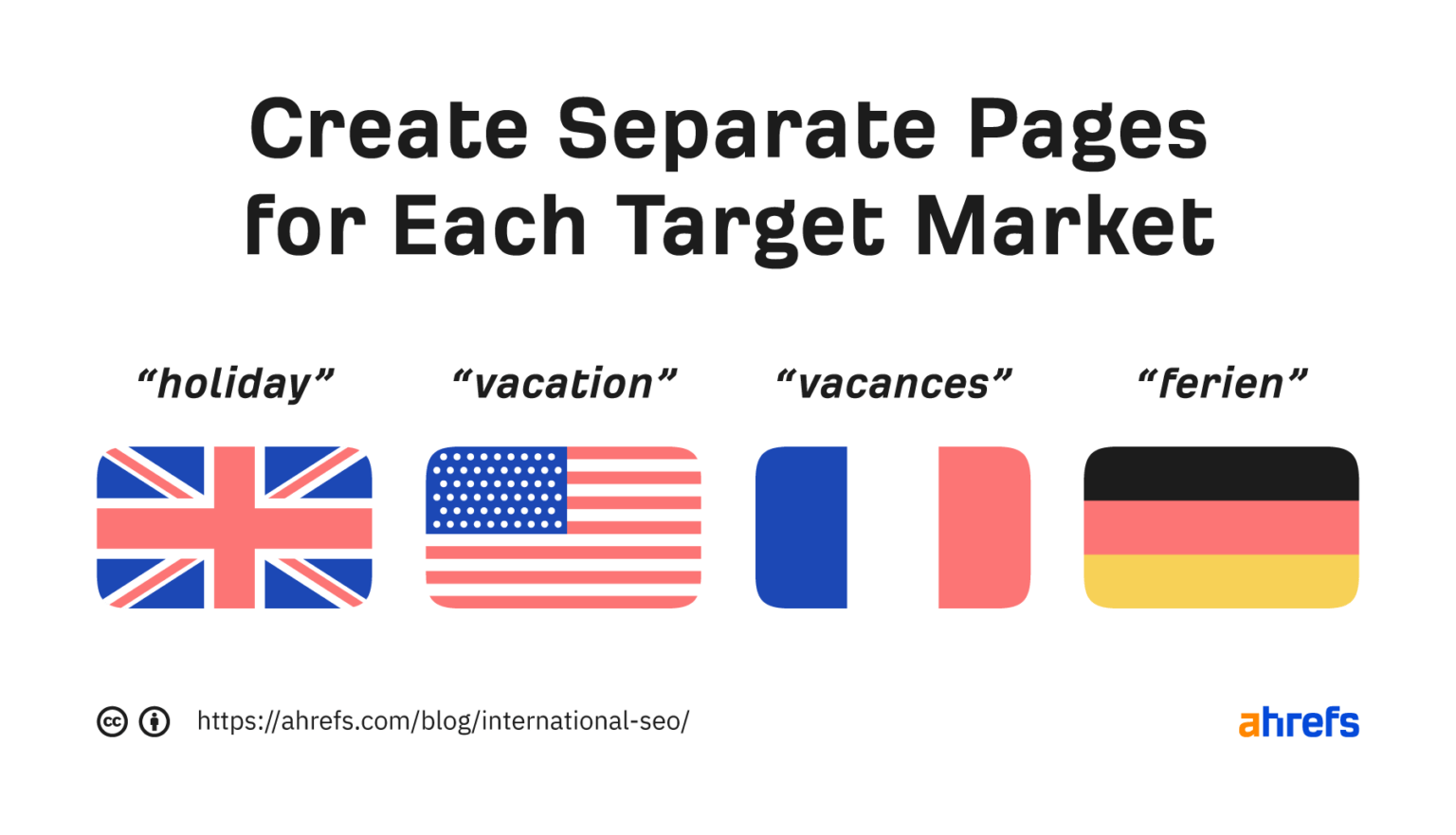
These nuances not only matter for users but are also something that Google could pick up too. After all, it’s Google’s job to serve the most relevant result for each user. Therefore, Google will prefer to serve content that is relevant to both the country and language of the user.
One of the easiest mistakes to make when rolling out content internationally is internally linking to the wrong version of your content. Not only can this lead to your users landing on pages in a different language but it may also send conflicting signals to Google.
Instead, make sure you only link to content that targets the same country and/or language.
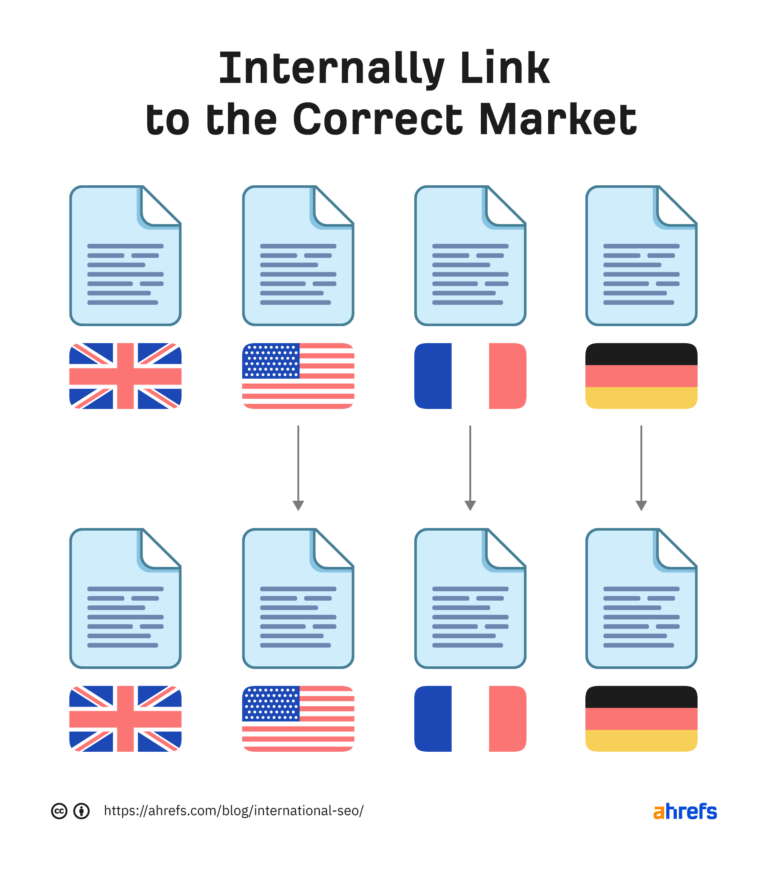
If you only have a small number of pages for a specific country or market, this may be a sign that it’s too soon to launch in this international market. Launching into a brand-new market with only a small number of pages will limit your international SEO rankings and traffic. It can also affect user experience if you don’t have enough useful content to serve visitors.
Launching with a wider range of content will also better help Google associate your website and brand with the market you intend to launch within. As a general rule, I’d recommend ensuring you have enough content to link to via your header and footer navigation for each foreign market when launching a new international SEO strategy.
Hreflang is a piece of code that usually sits in the backend of a page (or sometimes via sitemaps). It’s essentially a mapping process, providing Google with a list of the alternative URLs for a specific page.
This helps Google to understand:
- Which market the current page intends to target.
- Alternative options for users in other markets.
- A version to serve by default for users searching from markets without a dedicated page (optional).
Implementing hreflang will not only enhance user experience but also let your rankings benefit from close duplicates (in particular, the versions that use the same language).
While PageRank isn’t passed through the hreflang, Google will use the most authoritative version in the searched language to determine the ranking position. When a user then conducts the search, Google will serve the most relevant version for that user.
There’s no doubt that hreflang can quickly become one of the most complex areas of SEO. No need to fear—our very own Joshua Hardwick has compiled a dedicated beginner’s guide to hreflang.
Ahrefs’ Site Audit (free to use with an Ahrefs Webmaster Tools account) is the perfect place to review your hreflang implementation. First, you’ll need to run an SEO audit on your website.
Once your audit is complete, head to the Localization report to uncover any errors.
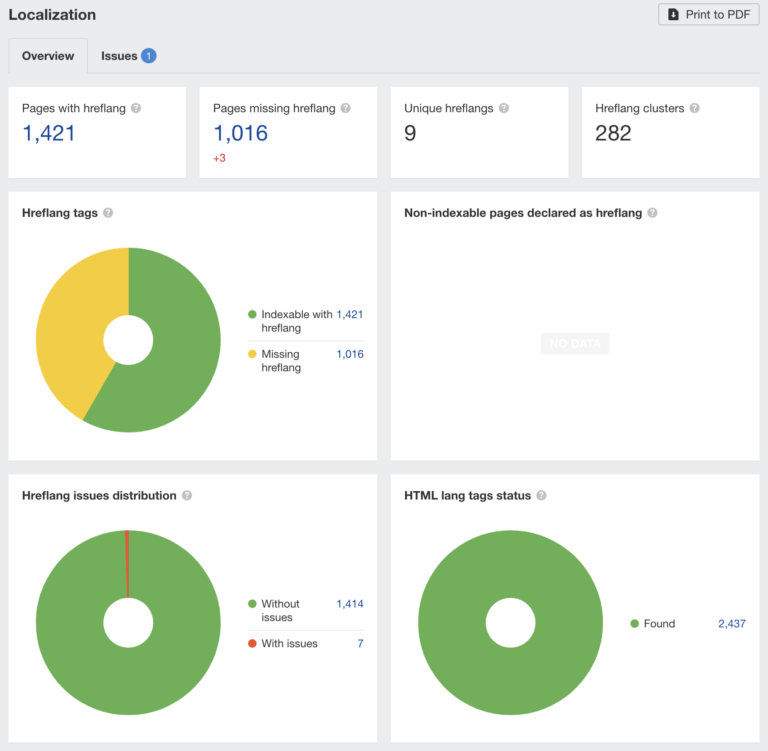
If users are viewing the wrong version of your site, prompt them to switch to the correct version instead of redirecting them automatically.
Redirecting users based on their IP address or by cookies should be completely avoided. This will not only frustrate users but also cause further confusion for bots.
Google will more frequently crawl content via a US IP address. Therefore, you may be redirecting Google away from any non-US content. Bypassing the redirect for the Googlebot user agent is also not advised. It’s important to ensure Googlebot has the exact same experience as your users.
Don’t just take it from me. Google advises against this too:
These redirections could prevent users (and search engines) from viewing all the versions of your site.
The documentation expands on this further by saying:
Don’t use IP analysis to adapt your content. IP location analysis is difficult and generally not reliable. Furthermore, Google may not be able to crawl variations of your site properly. Most, but not all, Google crawls originate from the US, and we don’t attempt to vary the location to detect site variations.
As an alternative solution to IP redirection, you may wish to prompt a user, who appears to be in the wrong location, to review their version of the site via navigation. Here’s how Apple implemented its prompt.

You can also include a navigation menu to allow users to switch between languages or countries on their own. Providing dedicated navigation to switch back to the right version could be the difference between losing and gaining a potential customer.
For example, on our website, all users can easily switch language at any time.
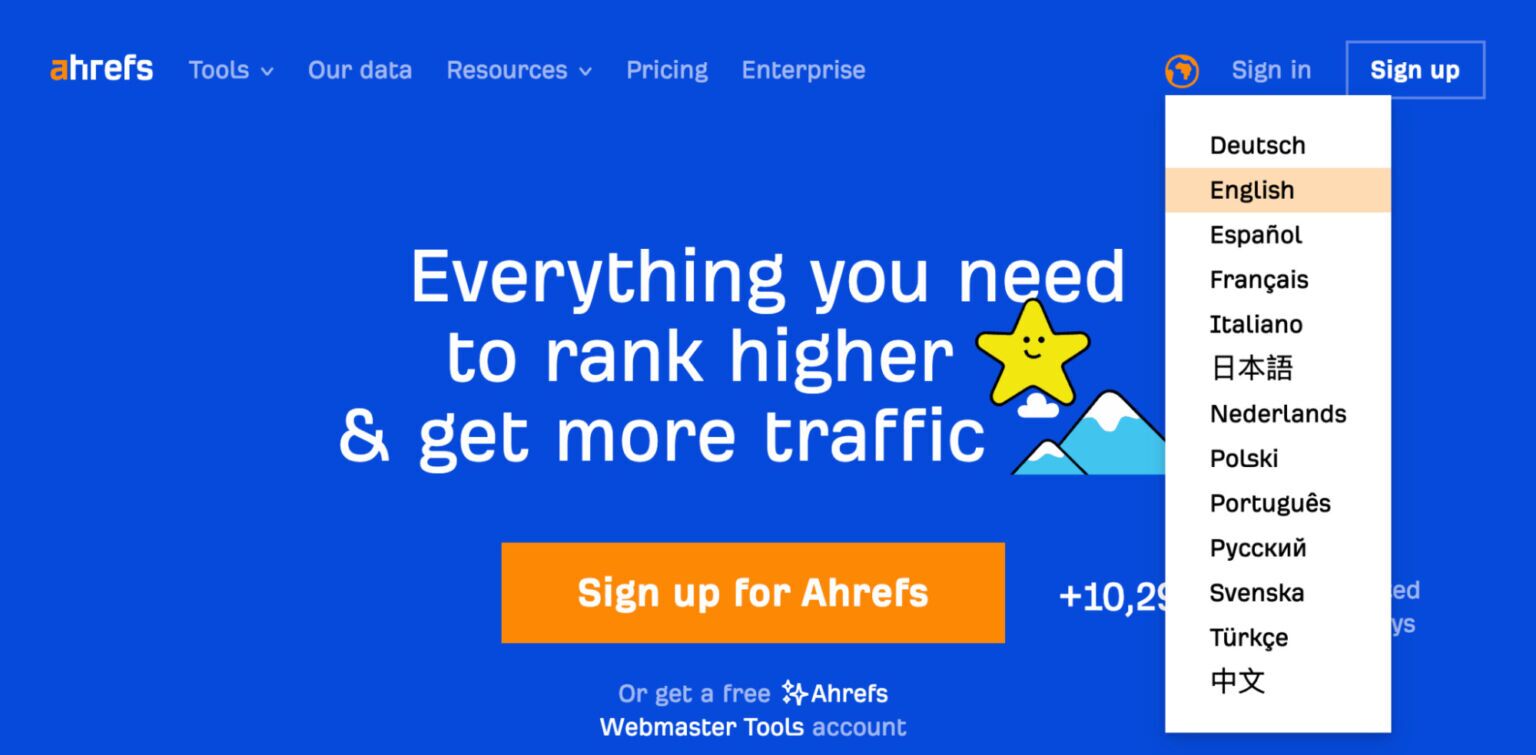
Regardless of whether you have a strong presence in your home market, you’ll also need to build authority in the new foreign markets that you wish to operate within.
A backlink from a highly authoritative site in the U.S. may not hold the same weight in Mexico, for example.
Quite often, this step is overlooked. Despite appearing last in this guide, it should not be written off.
To check the state of your backlinks in each country, check out Ahrefs’ Site Explorer > Overview > “Backlink profile” tab.
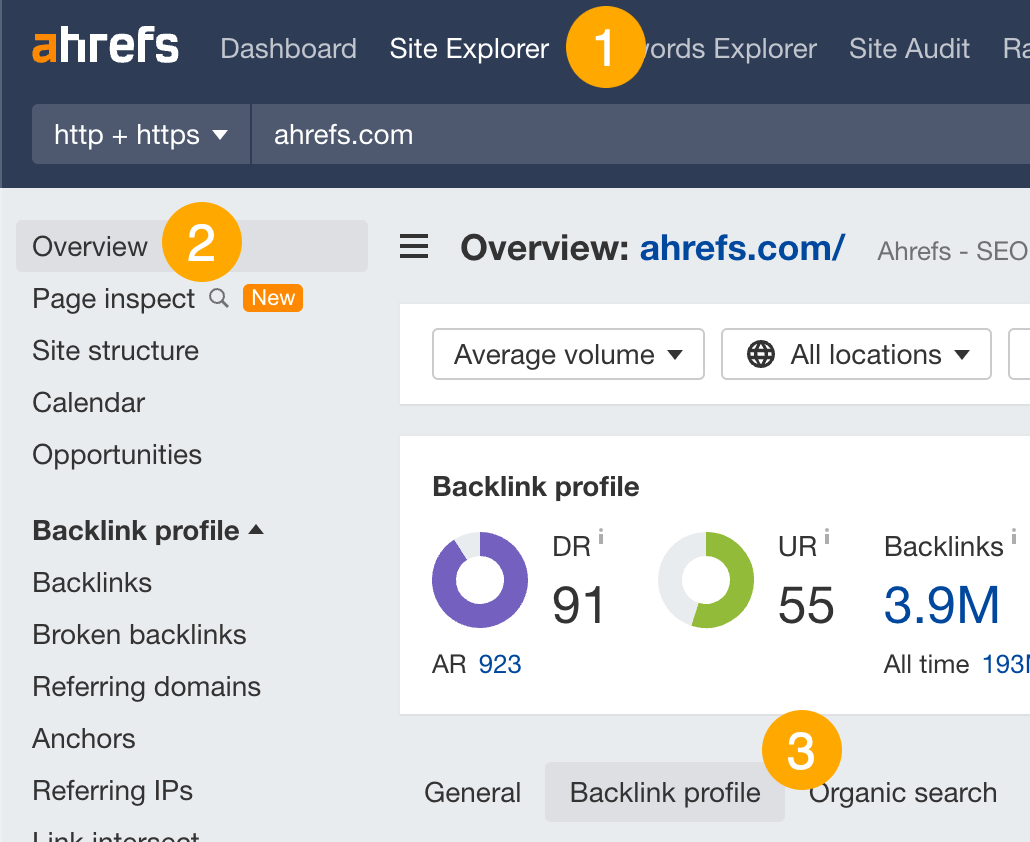
If you scroll a little, you’ll see a world map with indications of where most of your links are coming from. You can also toggle the “Country-code only” filter to only see links from ccTLD domains.
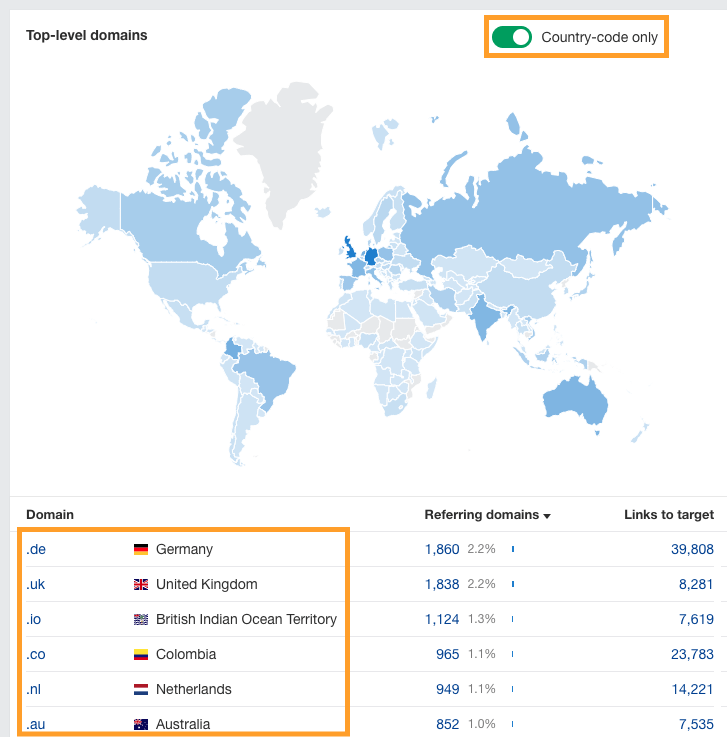
Keeping an eye on this report over time can show you markets where your link building efforts may need more attention. You can also look at the same reports for competitors website’s to see where their international backlink wins are coming from.
Key takeaways
By using our international SEO checklist, you will easily be able to optimize your website for global markets and to secure rankings in many different countries. Above all, remember to:
- Use the URL structure that fits your needs best (avoiding URL parameters at all costs)
- Localize your international SEO strategy as much as you can, from keyword research to content
- Use hreflang properly to send clear signals to Google
- Site speed matters for users in all countries; installing a CDN is a must
- Continue to grow your backlink profile in each specific country you target
Have any questions? Which international SEO URL structure do you prefer? Ping me on Twitter X and let me know.
Content Copyrights Belong to The Author. All Rights Reserved.
We're A Dallas Digital Marketing Agency That is Experts At Social Media Marketing, Website Design and Emarketing and Promotion.

